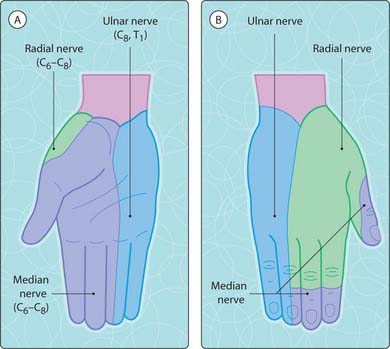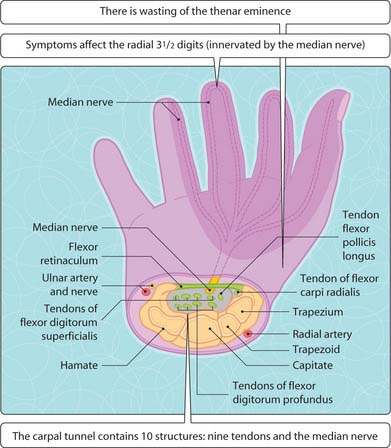57 Upper limb nerve palsies
Nerve palsies are particularly common around the elbow and wrist. They often present with a functional deficit, and so knowledge of the underlying anatomy is important (Fig. 3.57.1). They occur as OSCE stations so it is important to know how to examine them.
Carpal tunnel syndrome
There are 10 structures within the carpal tunnel: the median nerve and nine flexor tendons (four flexor digitorum profundus tendons, four flexor digitorum superficialis tendons and one flexor pollicis longus tendon; Fig. 3.57.2). Any process that narrows the width of the tunnel, either bony compression or fluid retention (below), will compress the median nerve as it passes through the tunnel. Causes of carpal tunnel syndrome include pregnancy (fluid retention is a common cause), repetitive strain injuries, Colles’ fracture, rheumatoid arthritis, myxoedema (hypothyroidism), diabetes mellitus, idiopathic and acromegaly (rare). The median nerve innervates four muscles in the hand (LOAF): lateral umbricals (two of these), opponens pollicis, abductor pollicis brevis, flexor pollicis brevis. The last three form the thenar eminence.
Stay updated, free articles. Join our Telegram channel

Full access? Get Clinical Tree











